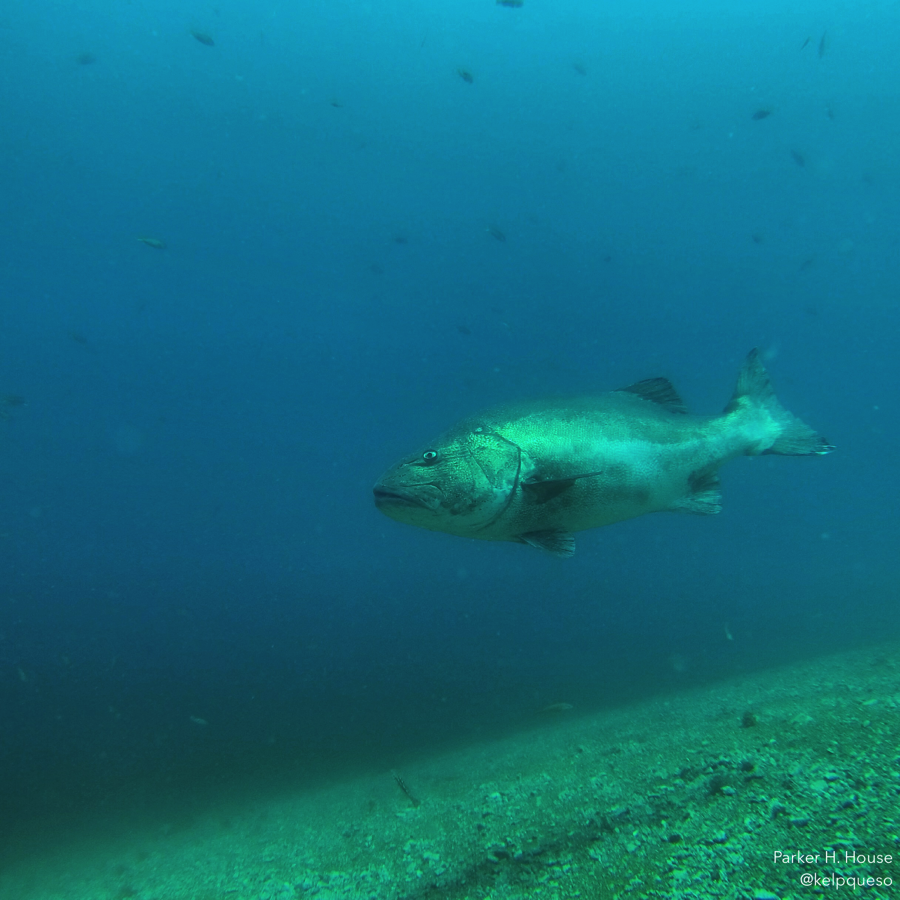By: Parker House
This summer has been a good one for “Team Giant Sea Bass” at the Wrigley Institute’s marine lab on Catalina Island. As WIES Summer Graduate Fellows, JR Clark and myself have spent the field season searching for the elusive king of the kelp forest: the Giant Sea Bass.
Giant Sea Bass were a prominent predator at one time in southern California history. However, due to their extreme size and curious nature they were fished to near extinction during the late 1800’s until 1981 when they were protected in California. Although it has been 33 years since these fish have been protected they are still very rare to see. This is mainly because they are slow to mature, and have lifespans close to those of humans (the oldest found so far being aged at 76 years old).
My research is to determine what the minimum population of Giant Sea Bass is off Santa Catalina Island, and if their numbers may be recovering based off historic densities. Also, if they are recovering, how this might influence the kelp forest fish communities. To do this I survey 8 sites, spanning from the west to east end on both sides on Catalina Island.
During surveys we use dive propulsion vehicles (or sea scooters) with length calibrated lasers and a GoPro video camera mounted on top. The scooters allow us to cover long distances underwater while the lasers are to accurately size individuals seen during surveys.
So far our research has been fruitful and one of the most enjoyable experiences of my life. We are finding promising numbers of Giant Sea Bass around the island. During a survey last week we stumbled upon an aggregation of 24 individuals.
A few weeks ago we also found the largest Giant Sea Bass ever, measuring in at 9ft long – according to published growth curves by Dr. Larry Allen, it would way in at up to 800lbs!
Diving with Giant Sea Bass is something every underwater enthusiast should try to do at least once in their life. Many of them come right up to you and hang out as if they just want to see what you are up to… with behavior like this, it is easy to see how their population was decimated so easily – they would not be much of a challenge for a spear fisherman.
This research would not have been possible without the great facilities that the USC Wrigley Institute for Environmental Studies provides, and I am looking forward to ending the 2014 field season on a high note.
Parker is a graduate student at California State University, Northridge, in the Department of Biology. If you would like to know more about the research his group is doing at CSUN and UCSB, visit their page at www.facebook.com/giantseabass



